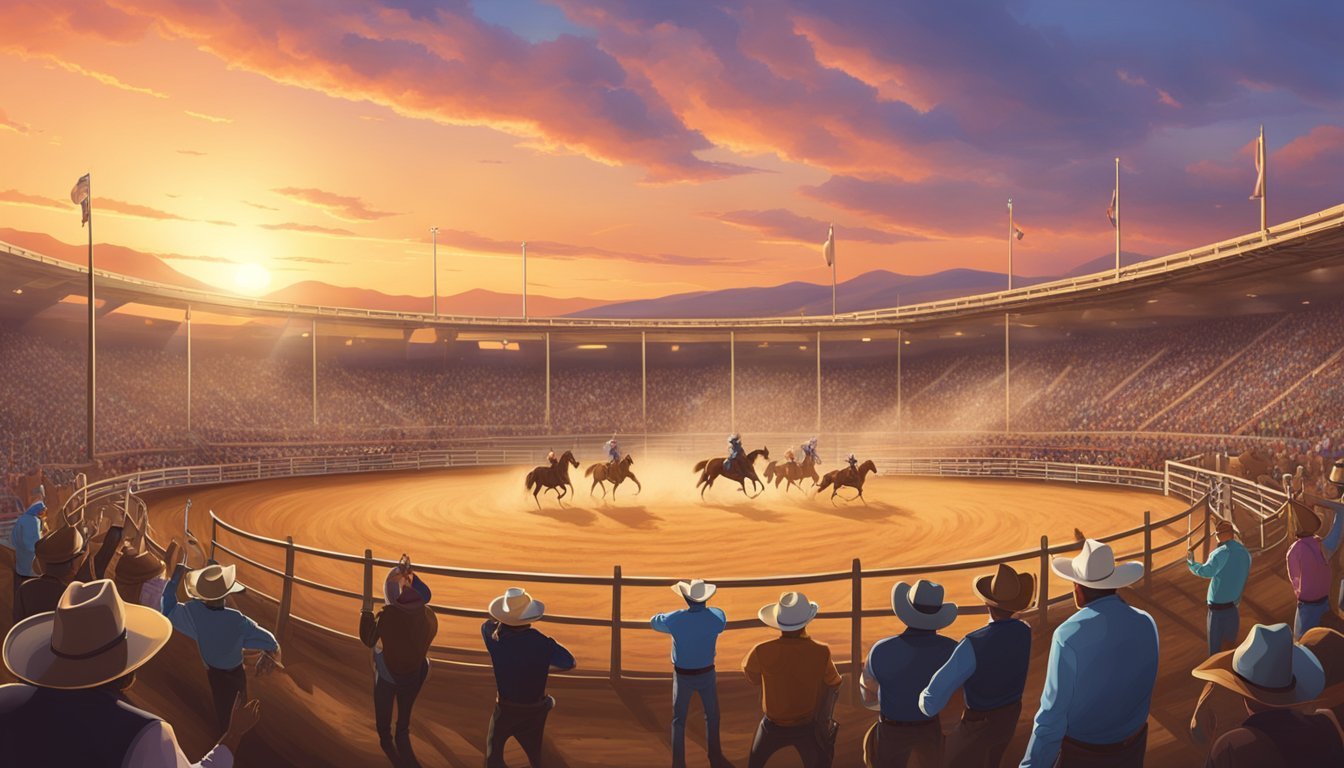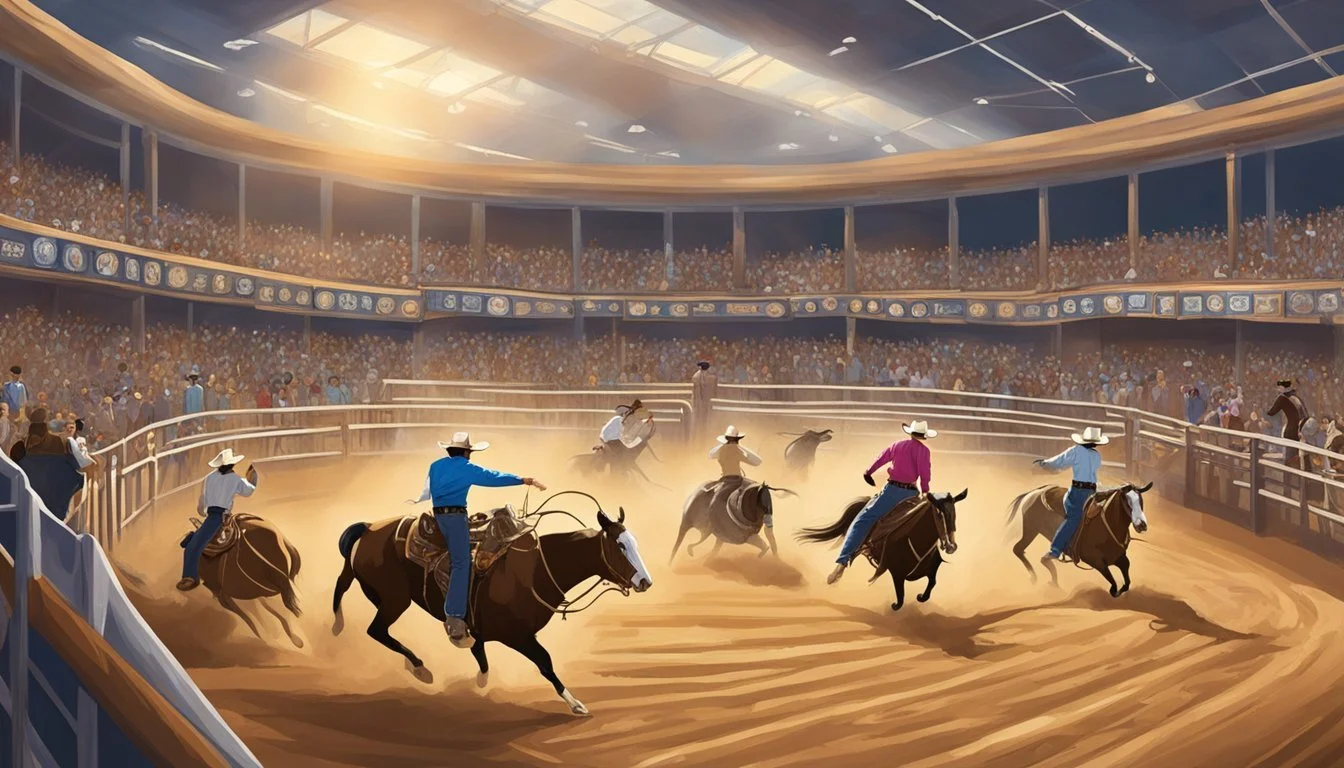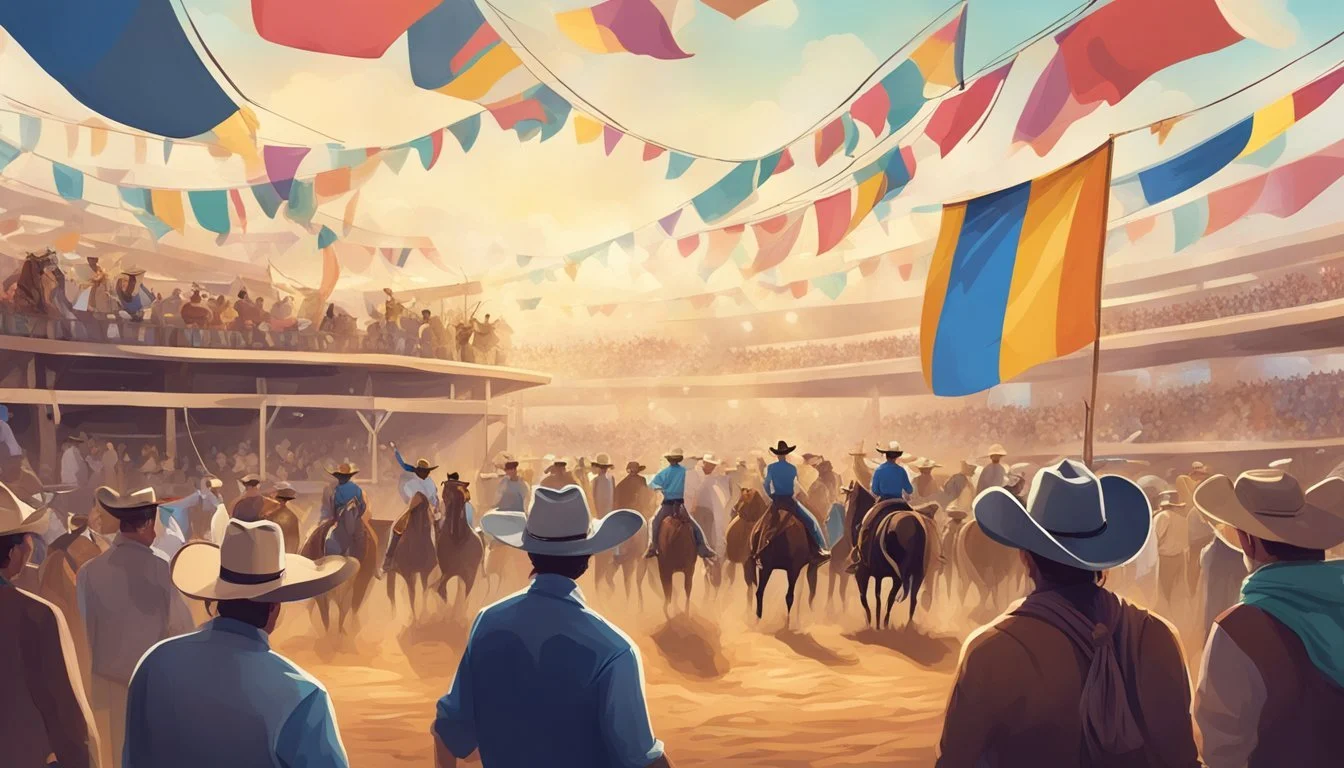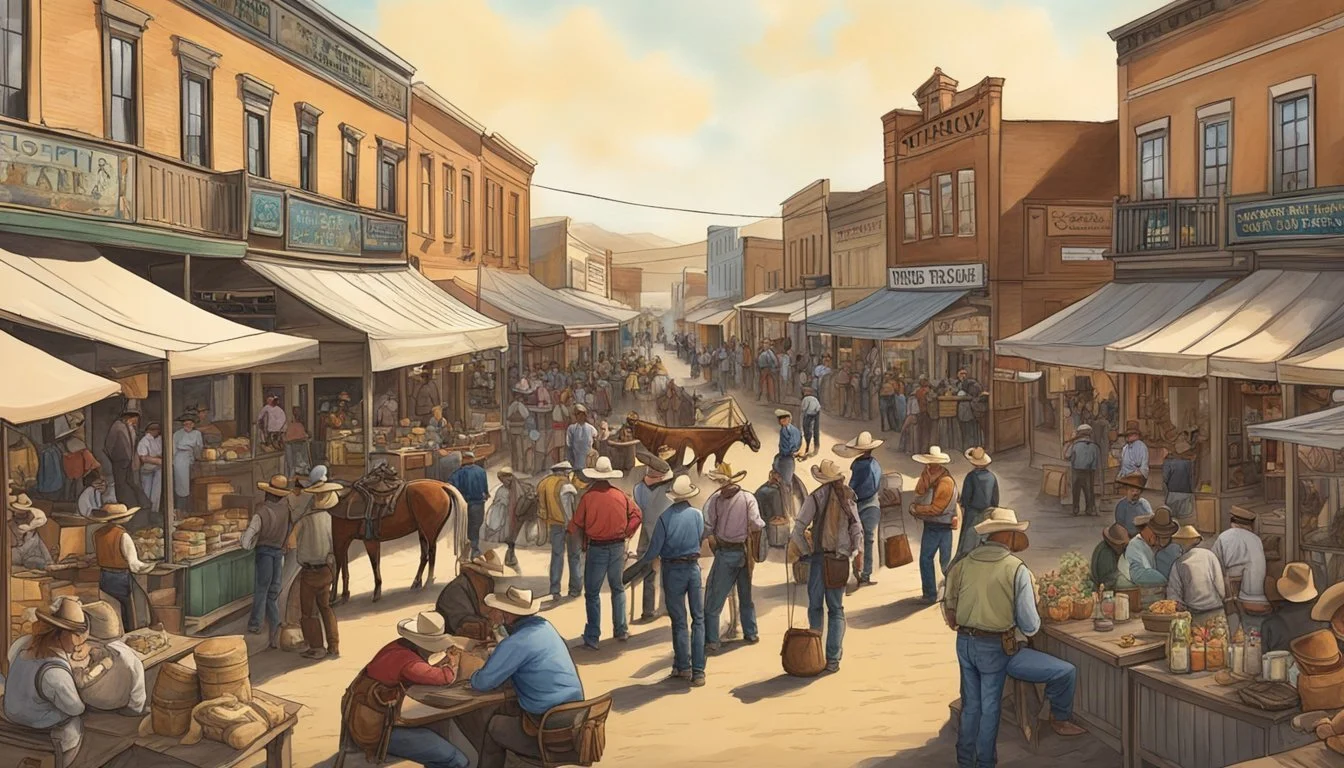Exploring the World of Cowboy and Western Festivals
A Guide to the Best Events
Cowboy and Western festivals are vibrant celebrations that capture the spirit and heritage of the American West. These events offer a unique glimpse into the customs, music, poetry, and sports that have shaped the cowboy culture. From the adrenaline-fueled rodeos with their bronc riding and roping to the melodic strumming of guitars at a folk music gathering, these festivals showcase the diversity and enduring allure of Western traditions.
In towns and cities across the United States, cowboy festivals serve as both educational and entertaining gatherings, bringing together individuals of all ages to appreciate and participate in the Western lifestyle. Key events on the cowboy festival circuit include the World's Oldest Rodeo in Prescott, Arizona and the Montana Cowboy Poetry Gathering. These events not only honor the past but also ensure that the cowboy way of life continues to be celebrated and passed down through generations.
Historical Context of Cowboy Festivals
Cowboy festivals offer a lens into the rich tapestry of Western history, encapsulating the evolution of cowboy culture, the influence of Native American heritage, and the historical significance of rodeos.
Evolution of Cowboy Culture
Cowboy culture has its roots in the Wild West, a period often romanticized for its outlaws and duels yet grounded in the reality of tough, often solitary ranching work. From the late 19th century, cowboys were integral to cattle herding across vast landscapes. They were mostly young men, drawn to this way of life for the promise of pay despite its hardships, earning $25 to $40 a month. Over time, these individuals transformed from mere cattle herders into cultural icons, synonymous with the rugged spirit of the American West.
Influence of Native American Heritage
The cowboy legacy is deeply entwined with Native American culture, tracing back to the vaqueros—the original cowboys of Spanish heritage—who were adept in herding techniques and horsemanship. Their skills and practices were adopted and adapted by cowboys, shaping the overall culture of cattle herding. Festivals today often honor these traditions, displaying the intricate relationship between cowboy culture and Native American heritage.
Significance of Rodeos in Western History
Rodeos are pivotal events in Western history, with the world's oldest rodeo, Prescott Frontier Days, dating back to 1888. Initially practical skills contests for cowboys during roundup and branding activities, rodeos evolved into spectator events demonstrating abilities like riding, roping, and wrestling livestock. Rodeos became a core element of cowboy festivals, celebrating the expertise and daring nature of cowboys that continues to resonate across generations.
Iconic Cowboy and Western Festivals
The celebration of the American West's heritage is kept alive through various iconic festivals that embody the spirit of cowboy culture and history.
Cheyenne Frontier Days
Taking place in Cheyenne, Wyoming, Cheyenne Frontier Days is heralded as the world's largest outdoor rodeo and western celebration. The event, which spans ten days, showcases the epitome of cowboy skills in events like bull riding, barrel racing, and steer roping. It also includes parades, concerts, and an air show, making it a multifaceted festival that attracts visitors from all corners of the globe.
Prescott Frontier Days and World's Oldest Rodeo
Prescott, Arizona, is home to Prescott Frontier Days and the World’s Oldest Rodeo, an annual event held since 1888. Recognized as the world’s first rodeo, it offers a glimpse into professional rodeo with a range of competitions and performances. The event not only celebrates cowboy athleticism but also features a grand parade, arts and crafts, and a rodeo dance, offering a comprehensive western experience.
Deadwood's Wild Bill Days
In Deadwood, South Dakota, the legacy of the Wild West is celebrated with Deadwood's Wild Bill Days. This festival honors the infamous gunslinger Wild Bill Hickok with reenactments, shootouts, and entertainment capturing the lawless spirit of the Wild West. It is a blend of historical tribute and modern enthusiasm, inviting attendees to experience the lore of Deadwood's storied past.
Cowboy Skills and Rodeo Events
Cowboy and western festivals showcase a plethora of skills, with rodeo events forming the core attraction. These competitions are a testament to the riders' abilities and the rigorous training of the animals involved.
Bull Riding and Barrel Racing
Bull Riding is a premier event that demands immense physical strength and tenacity from cowboys. It is a Professional Bull Riding (PBR) sanctioned event where cowboys must stay atop a bucking bull for eight seconds, holding onto nothing but a braided rope. This event scores riders based on both the bull's performance and the rider's ability to stay on the bull.
Barrel Racing, traditionally dominated by cowgirls, requires precision and speed. Competitors race against the clock, maneuvering their horses around a cloverleaf pattern of barrels. The goal is to complete the pattern as quickly as possible without knocking over any barrels, which results in a penalty that adds to the overall time.
Horsemanship and Charrería
Horsemanship is central to cowboy skills and is showcased through various rodeo events. These events highlight the bond between horse and rider, necessitating seamless communication and control. Competitors are assessed on their ability to complete various tasks which may include reining, cutting, roping, or riding with both speed and style.
Charrería is a traditional Mexican rodeo composed of events that involve roping techniques, horse reining, and bull riding. It's often referred to as the "national sport of Mexico" and demonstrates not only the rider's dexterity but also the elegance of the horses. It is a cultural event as much as a demonstration of equestrian skills, and it has helped to preserve traditional Mexican cowboy techniques.
Cultural Expressions and Western Heritage
Cowboy and Western festivals serve as vibrant hubs for cultural expressions and the celebration of Western heritage, showcasing everything from traditional music and literature to indigenous artistic expressions and modern rodeo fashions.
Western Music and Cowboy Poetry
Western music and cowboy poetry are core components of cowboy culture. Contemporary artists like Dave Stamey reflect the soul of the West with lyrics that paint pictures of life on the open range. Festivals like the Montana Cowboy Poetry Gathering and Western Music Rendezvous and the National Cowboy Poetry Gathering offer platforms for both emerging and established performers to share their craft with enthusiastic audiences. The poetry often delves into themes of nature, the harshness and beauty of the rural lifestyle, and romanticized visions of cowboy life.
Native American Art and Rodeo Fashion
Native American culture is intricately linked with Western heritage, contributing significantly to the fabric of cowboy festivals. This is evident in the inclusion of Native artists who exhibit their rich heritage through paintings, pottery, and other mediums. Such artworks not only depict traditional scenes but also comment on contemporary times, allowing a fusion of past and present.
Rodeo fashion merges practicality with flamboyance, seen in attire ranging from ornate cowboy boots to Stetson hats. Its evolution is influenced by both cowboy utility and the distinctive cultural motifs of Native American design, manifesting a cross-cultural style that celebrates the robust identity of the American West.
Destinations and Tourism
Exploring the cowboy and western festival scene leads tourists to an array of authentic locations and activities. Whether it's historic towns with storied pasts or expansive natural landscapes offering a range of outdoor pursuits, these destinations provide a deep dive into the cowboy culture and the beauty of the American West.
Famous Western Towns and National Parks
Cody, Wyoming, is renowned for the Cody Stampede Rodeo and the Buffalo Bill Center of the West. The town offers a gateway to Yellowstone National Park, one of America's first national parks, with its stunning geothermal features and abundant wildlife.
Tombstone, Arizona, immortalized by the Gunfight at the O.K. Corral, gives visitors a chance to relive history at the O.K. Corral, Boothill Graveyard, and the Bird Cage Theatre.
Deadwood, South Dakota, listed on the National Register of Historic Places, provides an immersive experience into the Old West with its preserved architecture and live reenactments.
Additional nearby landmarks include:
Mount Rushmore National Memorial
Crazy Horse Memorial
Custer State Park – with its notable bison (What wine goes well with bison?) herds
Grand Teton National Park – a prime destination for its dramatic mountain ranges
Guest Ranches and Outdoor Recreation
Guest ranches embody the spirit of the West, offering visitors a chance to participate in the daily operations of a working cattle ranch and experience outdoor recreation like trail riding and horseback riding. Here are some opportunities:
Seven Lazy P Guest Ranch in Choteau, Montana, captures the essence of ranch life against the backdrop of the Rockies.
Guest ranches across the region often include programs for hiking, wildlife watching, and learning about ranch management and conservation.
These destinations and activities help preserve the legacy and allure of the cowboy era, attract tourism, and provide a comprehensive experience of Western American culture.
Annual Events and Calendars
Throughout the year, a variety of colorful and vibrant cowboy and western festivals take place across the United States, drawing crowds and enthusiasts from all over. These events often feature rodeos, fairs, and a chance to saddle up and immerse oneself in Western culture.
Seasonal Timing of Festivals
Spring: As the season brings warmer weather, a number of western festivals kick off. Visitors can plan accordingly, as this time of the year is less crowded compared to peak summer months.
World's Oldest Rodeo: Prescott, Arizona holds this event from June 28-July 4.
California Cowboy Events: Celebrating Western heritage in locations across the state, these events often coincide with spring.
Planning Your Festival Experience
When planning to attend a western festival, consider the following essential steps:
Tickets: Purchase tickets in advance, especially for popular events like the Cheyenne Frontier Days occurring from July 19-28, 2024, which is known as the world's largest outdoor rodeo.
Accommodations: Book early to secure lodging close to the event, as hotels can fill up quickly due to the influx of attendees.
Local Culture: Explore the local culture and history of the hosting town. For instance, the festival in Kanab, Utah, celebrates the town's cinematic Western heritage.
By paying attention to seasonal timing and planning logistics such as tickets and accommodations, attendees can fully enjoy the diverse offerings of cowboy and western festivals throughout the year.
Community and Economy
Western festivals celebrate the rich history of the American West and significantly benefit local communities through economic stimulation and tourism.
Local Business and Festival Economics
Western festivals play a crucial role in supporting local economies. San Antonio, Texas, often serves as a hub for cowboy culture gatherings, where artisans and vendors see increased business. During these events, crowds come together, leading to a surge in sales for local, small businesses as festival-goers purchase goods ranging from authentic leather boots to handcrafted jewelry. The flow of money at these events aids in the preservation and promotion of cowboy culture, ensuring that both the economy and tradition thrive side by side.
Economic Impact:
Direct spending on accommodations, food, and entertainment
Increased revenue for artisans and local shops
The Cowboy Experience and Tourism
Western festivals offer an immersive cowboy experience that attracts tourists, further benefiting the local economy. For instance, towns like Deadwood hold reenactments that introduce visitors to legendary figures such as Calamity Jane, sparking interest in the historical narrative of the West. Tourism centered on cowboy culture can significantly impact West Texas towns by drawing visitors eager to engage with the authentic cowboy experience. This tourism not only bolsters existing businesses but also provides opportunities for new ventures in the Lone Star State and beyond.
Tourism Benefits:
Enhanced visibility for the region
Opportunities for cultural education and engagement







